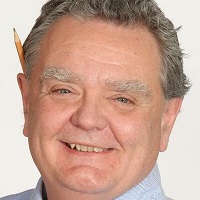 By David Burda, News Editor & Columnist, 4sight Health
By David Burda, News Editor & Columnist, 4sight Health
Twitter: @davidrburda
Twitter: @4sighthealth_
I played a lot of baseball when I was younger, and I helped coach my sons’ baseball teams when they played. One of the phrases I used and heard over and over again was: “He’s feeling his oats.” When a player who hits nothing but singles suddenly hits a homerun, we’d say, “He’s feeling his oats today!”
It’s saying he had a burst of energy and did something bold because he ate a good breakfast or tapped into another source of unusual power or speed.
I don’t hear the phase much anymore as my playing and coaching days are over. But I thought of it when I looked through this new survey of healthcare consumers by ZS Associates, the Evanston, Ill.-based management consulting firm. The survey results suggest that passive patients may be feeling their oats and becoming active healthcare consumers.
ZS asked 9,517 healthcare consumers age 18 or older in six countries a series of questions about their interactions with their country’s healthcare system. Of the total respondents, 4,010 lived in the U.S. I’ll focus on the responses from U.S. consumers as I don’t live in China, Germany, Japan, Sweden or the United Kingdom.
Overall, less than half — 42 percent — of U.S. healthcare consumers said the healthcare system as a whole makes them feel cared for. To wit:
- 45 percent said they skip regular health screenings.
- 44 percent said they only see their doctor when they’re sick.
- 24 percent said they avoid medical care because of the hassle factor.
- 24 percent said they avoid medical care because of the cost.
Those are very consumer-like behaviors. Not going. Not going unless you have to. Not going because it’s a hassle. Not going because of the cost. Sounds a lot like me when someone wants me to go to an upscale restaurant or a hot new restaurant downtown.
U.S. healthcare consumers also said they want a more connected healthcare experience:
- 82 percent said being more connected results in better diagnoses, treatment and care.
- 78 percent said they want more direct communication with their doctors.
- 76 percent said being more connected results in better health because they can monitor their own health information.
- 75 percent said being more connected results in better health because their providers can monitor their health information.
- 69 percent said being more connected improves community health and safety.
These are very active consumer-like sentiments. Most patients don’t want to sit back and wait for the healthcare system to take care of them. Instead, they want to be equal partners if not in charge of their own healthcare experience.
How are they connecting and taking control?
- 41 percent said they’re using patient portals.
- 31 percent said they’re using digital health apps.
- 24 percent said they’re using telehealth services.
Slowly but surely patients are using electronic, digital and asynchronous tools to transform themselves into assertive healthcare consumers.
Finally, patients here in the U.S. are more willing to share their personal health information to get what they need from a more connected healthcare system.
- 54 percent said they’d share PHI to improve their health.
- 45 percent said they’d share PHI to receive more tailored or personalized medical care.
- 39 percent said they’d share PHI to receive safer medical care.
- 39 percent said they’d share PHI to lower their healthcare costs.
Again, very consumer-like behaviors. I have something of value, and I’m willing to give it to you in exchange for something of value back.
Now, I may be reading too much into these survey results. But as I’ve mentioned before, I’m always looking for signs that patients are becoming active and informed healthcare consumers. Without that transformation, there will be no customer revolution in healthcare.
The ZS survey results gave me some hope … or oats.
Thanks for reading.
This article was originally published on 4sight Health and is republished here with permission.
